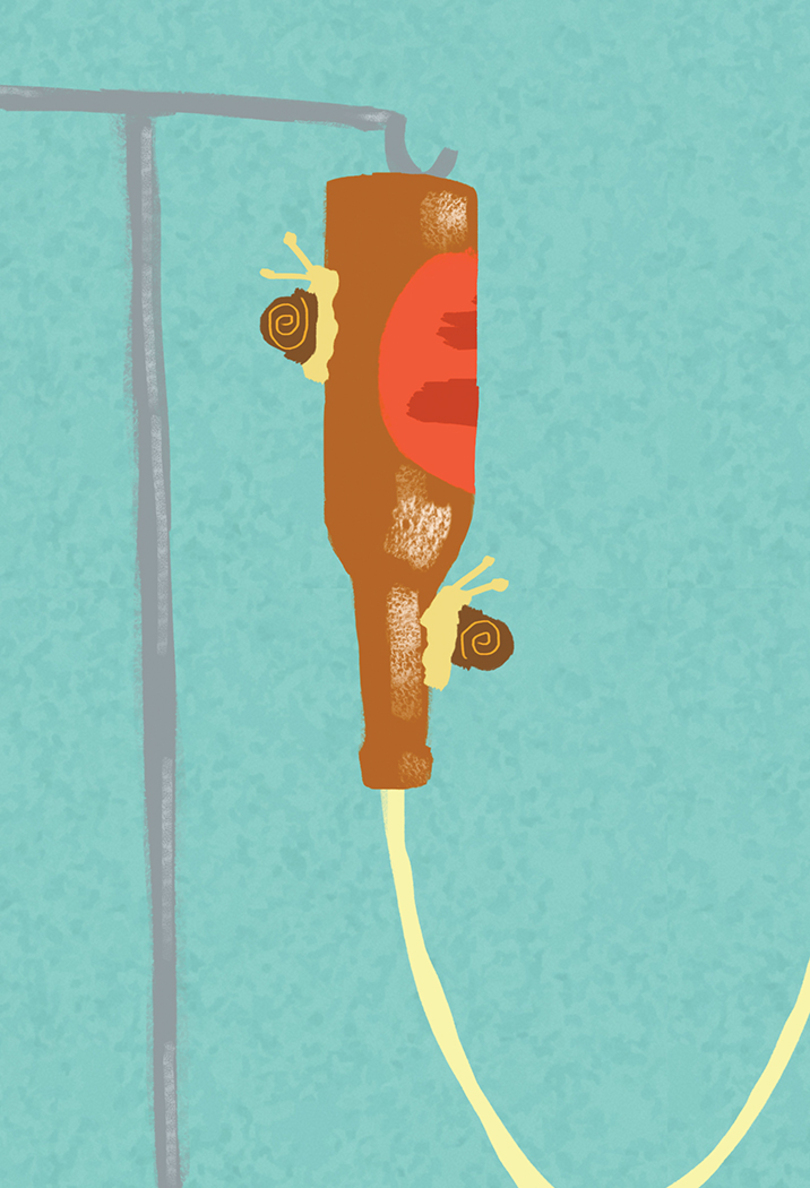SUNY-ESF graduate student’s use of beer helps to euthanize tiny snails

Delaney Kuric | Head Illustrator
Cody Gilbertson uses beer to euthanize snails in a more humane manner.
Even though they’re tiny, snails can feel pain too, Cody Gilbertson said. That’s why she has worked to find a more humane way to euthanize them — using beer as part of the process.
Gilbertson, a graduate student in the State University of New York College of Environmental Science and Forestry, focuses her research on a small, endangered land snail that only lives at Chittenango Falls in central New York.
To help the population grow, some snails are kept in captivity. Gilbertson is studying these snails to understand the right diet and conditions to support Chittenango ovate amber snails.
“Occasionally we preserve the snails, maybe ones not doing so well health-wise,” Gilbertson said, “Rather than let it die and its body slightly decomposed before we can preserve it, you can euthanize them. But it was kind of hard to watch.”
Usually researchers use an injection of 70 percent or 95 percent ethanol alcohol to euthanize snails.
She said she has had many conversations about the well-being of the snails in the lab with Jeffrey Wyatt, the director of animal health and conservation at the Seneca Park Zoo in Rochester, New York. They decided to try using beer as a way to prepare the snails for the injection.
They dip them in beer first, which Gilbert said has the same kind of effect as anesthesia, and as a result, they can’t feel the injection.
Gilbertson said they were looking to use something more universally available, which is why they chose beer. To find the right beer, they matched the ethanol content they were looking for to the alcohol content. They chose Pabst Blue Ribbon, which has a 4.74 percent alcohol content and dilutes the ethanol content to five percent.
The guidelines established by the American Veterinary Medical Association for aquatic invertebrates inspired her to find a similar method for anesthetizing and euthanizing the snails, Gilbertson said.
“As far as invertebrate protocols, there’s really nothing that’s standardized, at least for terrestrial invertebrates,” Gilbertson said. “There is an aquatic invertebrate protocol, but that’s why we initially wanted to do this research so we could come up with something that we could standardize and look at animal well-being and take that into consideration.”
Gilbertson started this research a few years ago as part of her master’s research, and they used a surrogate species to do a study on. The study appeared on the cover of the September issue of the Journal of the American Association for Laboratory Animal Science.
“It’s been amazing to watch the snails flourishing in captivity,” Gilbertson said.
At first she said it was hard to get the conditions right in the lab, but eventually she gained a better understanding of what they needed. When the snails laid their first eggs in the lab, she said she was excited because there are only about 200 of them left in the wild.
Gilbertson said she loves working with the snails because they’re curious animals. One of her favorite things is showing them to people because once they see the snails up close, she said they tend to have a greater appreciation for them.
“I think in general, people have an obligation to assess the animal’s well-being, regardless of the size of the animal,” Gilbertson said. “In the lab, field or captive setting, I think it’s our obligation to make sure the animal is happy.”




